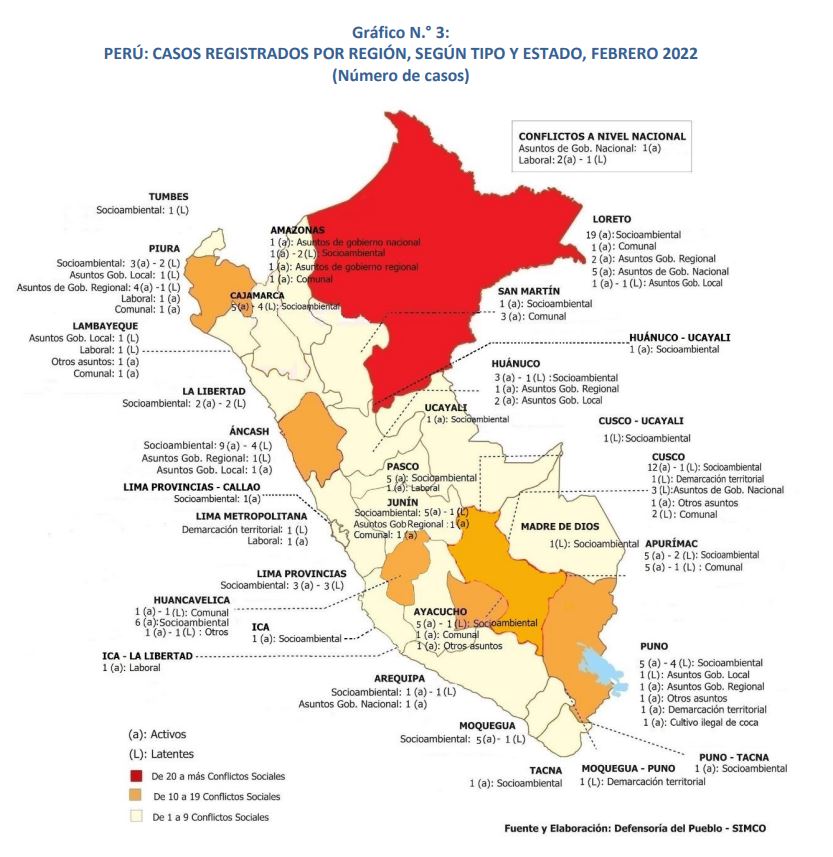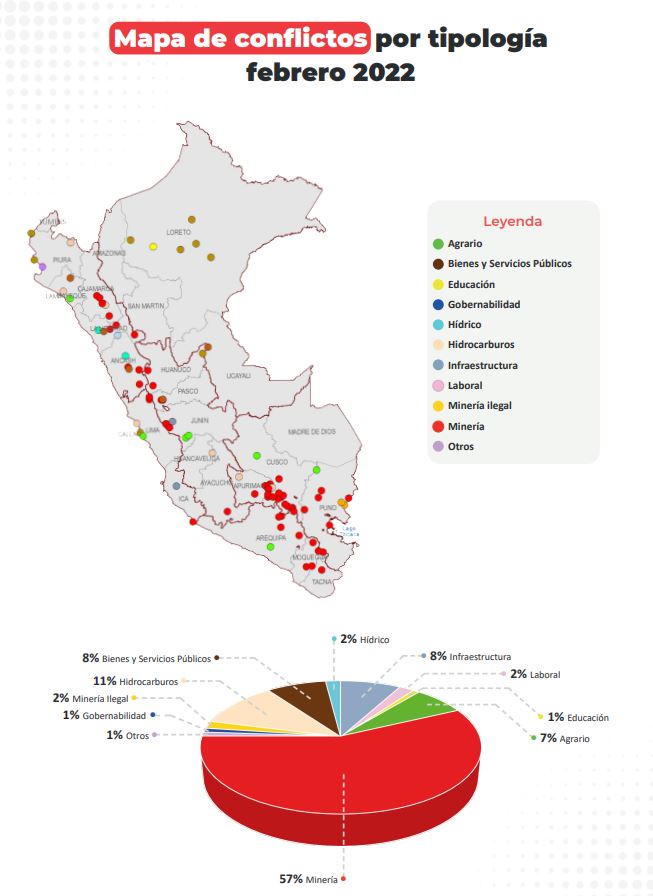
Latest news from Peru. The Union of Multimodal Transport Guilds of Peru (UGTRANM) is preparing to hold a mass strike that begins on Monday, April 4, although since previous days have already been begun to carry out interventions on the roads that prevent the proper movement of vehicles.
The latest report issued this morning by the Superintendency of Land Transport of People, Cargo and Goods (Sutran) indicates that on the fifth day of the strike the blockade of roads traffic on communications roads in six regions is interrupted, but mainly in Junín, Arequipa and Puno, where acts of violence have occurred.
Why is this stoppage taking place? The reason is fuel surge. The carriers have requested a dialogue with representatives of the central government in order to reach an agreement. This increase is no longer feasible for them to transport cargo because the cost of freight would also rise.
As a result of this new event in the government of President Pedro Castillo, some latent social conflicts have been highlighted that could cause another social impact as they do not receive a solution from the State. The marches, protests and stoppages are the expressions used by the injured parties in order to be treated by the corresponding authorities.
WHAT IS A SOCIAL CONFLICT?
It is understood as a complex process in which sectors of society, the State and/or companies perceive that their positions, interests, objectives, values, beliefs or needs are contradictory, creating a situation that could lead to violence.
The impact they can have depends on the number of actors involved, the cultural, economic, social and political diversity, the forms of violence that may occur, or the institutional weakness to address them, among other associated elements.
IMPORTANT: Videos and photos of the violence unleashed in Huancayo by the transport strike

WHAT IS HAPPENING NOW IN PERU?
By the beginning of 2022, the Undersecretariat for Prevention and Information Management (SSPI), which is responsible for monitoring conflicts affecting governance, fundamental rights and public order - submitted an official report indicating the recording and attention of 111 active social conflicts, of which 5 conflicts were recorded at a critical risk level and 28 at imminent risk. There were also 53 conflicts at intermediate risk and 25 at low risk.
In turn, there were fifty-three conflicts at intermediate risk and twenty-five conflicts at low risk, organized by Territorial Unit. Active social conflicts with higher levels of risk (critical and imminent) represent high risks to democratic governance and territorial governance; therefore, they are of priority interest to the Executive Branch.

SOCIAL CONFLICTS REPORT 2022
For the month of February of this year, cases by level of risk remained stable and there was no increase in the number of cases by level of risk, especially in those of “critical” and “imminent” status. The report indicates that the same case was maintained in a crisis situation recorded also in January (Pluspetrol-Lot 8 blockade), despite the fact that during the month, the Executive Branch held meetings with the native communities that have been implementing the measure of force (San Juan Campesino, Nuevo Triunfo and Nueva Libertad).
Amazonas also found itself in a crisis situation due to the blockade of the Corral Quemado Bridge, which was immediately attended to. In the last weeks of the month there was a smaller increase in cases at intermediate risk, this is explained by the activation of dialogue spaces, and with it, the meetings or sessions specific to the space.
On the other hand, conflicts at imminent risk, experienced a decline in the last two weeks of February, this was due to the fact that the risks of escalation of conflicts were managed during the month.
KEEP READING
Últimas Noticias
Debanhi Escobar: they secured the motel where she was found lifeless in a cistern
Members of the Specialized Prosecutor's Office in Nuevo León secured the Nueva Castilla Motel as part of the investigations into the case

The oldest person in the world died at the age of 119
Kane Tanaka lived in Japan. She was born six months earlier than George Orwell, the same year that the Wright brothers first flew, and Marie Curie became the first woman to win a Nobel Prize

Macabre find in CDMX: they left a body bagged and tied in a taxi
The body was left in the back seats of the car. It was covered with black bags and tied with industrial tape
The eagles of America will face Manchester City in a duel of legends. Here are the details
The top Mexican football champion will play a match with Pep Guardiola's squad in the Lone Star Cup

Why is it good to bring dogs out to know the world when they are puppies
A so-called protection against the spread of diseases threatens the integral development of dogs




